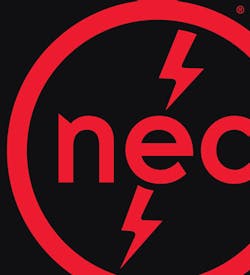Tip of the Week: Additional Items of Value in NEC Annex D
What can you learn from the NEC’s Annex D, Examples D1(a) and D1(b)? Both are for one-family dwellings, but the first one is much longer than the second one. So the first step in making use of these is to figure out why there's such a big difference in length.
The answer: Although they assume the same conditions and are the same problem, the second one adds several more loads to the mix.
So what is the basic problem and why should you care? The problem consists of calculating the loads, and from the results, determining the minimum feeder size and service size for this one-family dwelling.
This example takes you through each step, in the proper order, and provides NEC references at key points. By first providing a basic problem and then a more complicated one, the D1 Examples help you understand the work flow involved (doing the steps in the right sequence).
They also help you understand which loads to account for, given the conditions stated in the problem. For instance, in Example D1(a) you will see that to arrive at the Net Calculated Load, you must account for general lighting, small appliance circuits, laundry, range, and dryer.
About the Author

Mark Lamendola
Mark is an expert in maintenance management, having racked up an impressive track record during his time working in the field. He also has extensive knowledge of, and practical expertise with, the National Electrical Code (NEC). Through his consulting business, he provides articles and training materials on electrical topics, specializing in making difficult subjects easy to understand and focusing on the practical aspects of electrical work.
Prior to starting his own business, Mark served as the Technical Editor on EC&M for six years, worked three years in nuclear maintenance, six years as a contract project engineer/project manager, three years as a systems engineer, and three years in plant maintenance management.
Mark earned an AAS degree from Rock Valley College, a BSEET from Columbia Pacific University, and an MBA from Lake Erie College. He’s also completed several related certifications over the years and even was formerly licensed as a Master Electrician. He is a Senior Member of the IEEE and past Chairman of the Kansas City Chapters of both the IEEE and the IEEE Computer Society. Mark also served as the program director for, a board member of, and webmaster of, the Midwest Chapter of the 7x24 Exchange. He has also held memberships with the following organizations: NETA, NFPA, International Association of Webmasters, and Institute of Certified Professional Managers.
